What Hi-Fi? Verdict
Grado’s PS1000es can sound thrilling when partnered with care
Pros
- +
Exciting and entertaining sound
- +
Excellent dynamics and timing
Cons
- -
Sound lacks a little refinement
- -
Fussy about partnering equipment
- -
Comfort may be an issue
Why you can trust What Hi-Fi?
Grado makes some of the most distinctive looking headphones on the market, with its products looking like something that might be worn by a World War II radio operator.
The company is rightly proud of this look, and it has served the brand well, being both functional and instantly recognisable. Bar a few embellishments, these PS1000es are no different.
Build
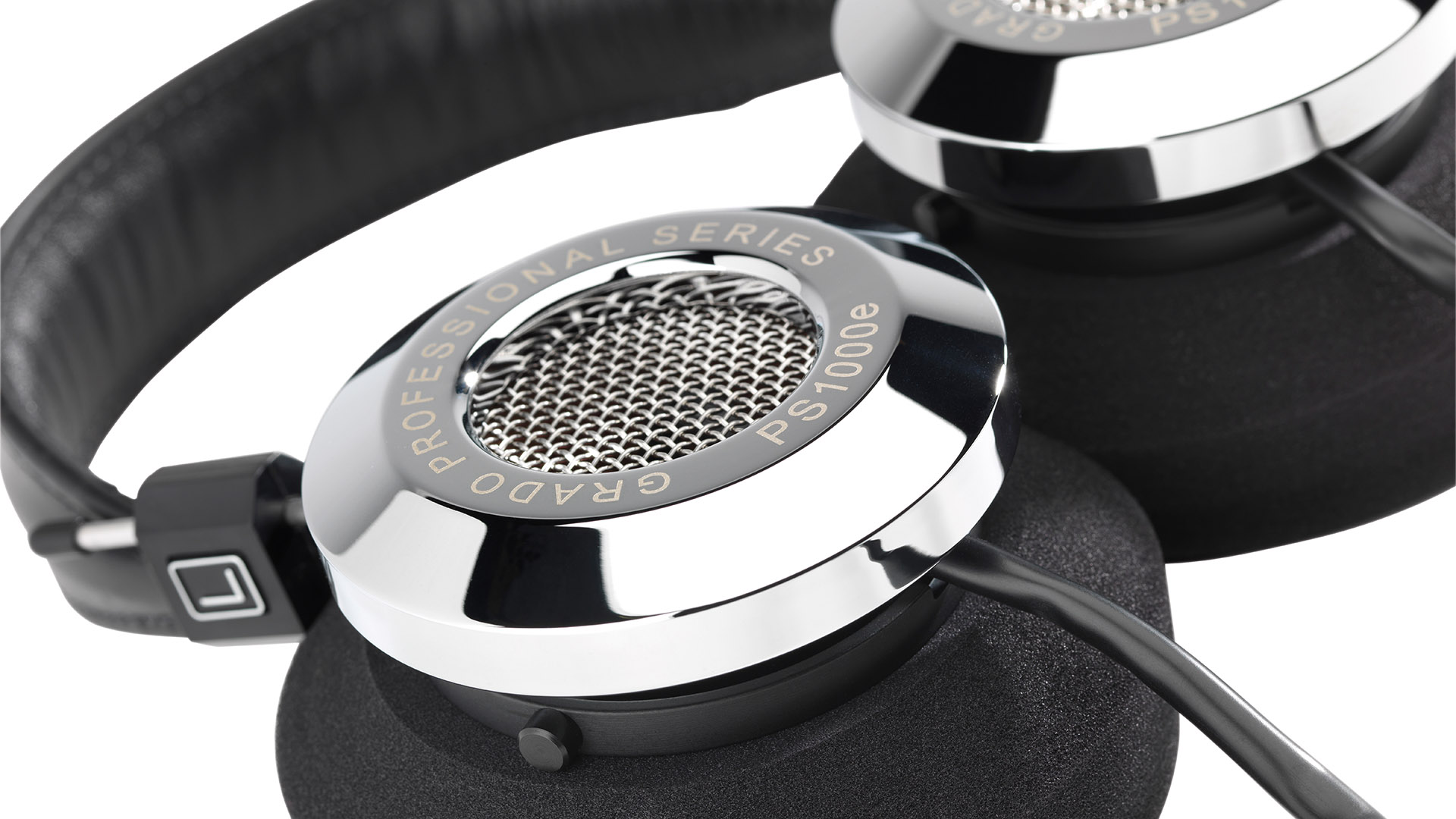
The PS1000es are an open-backed design of course, because that’s what Grado has always favoured. Even the company’s brand new wireless offerings, the GW100s, follow the same principle. That’s a surprising engineering choice for such a product when you consider the amount of environmental sound that gets in, let alone the almost unhindered way the music being played leaks out.
There’s an upside though, and it’s a big one. An open-backed design does away with the enclosure behind the drive unit and, with it, all the resonances and reflections that are part and parcel of such a configuration. The result, all things considered, should be a better, more articulate sound – on paper at least.
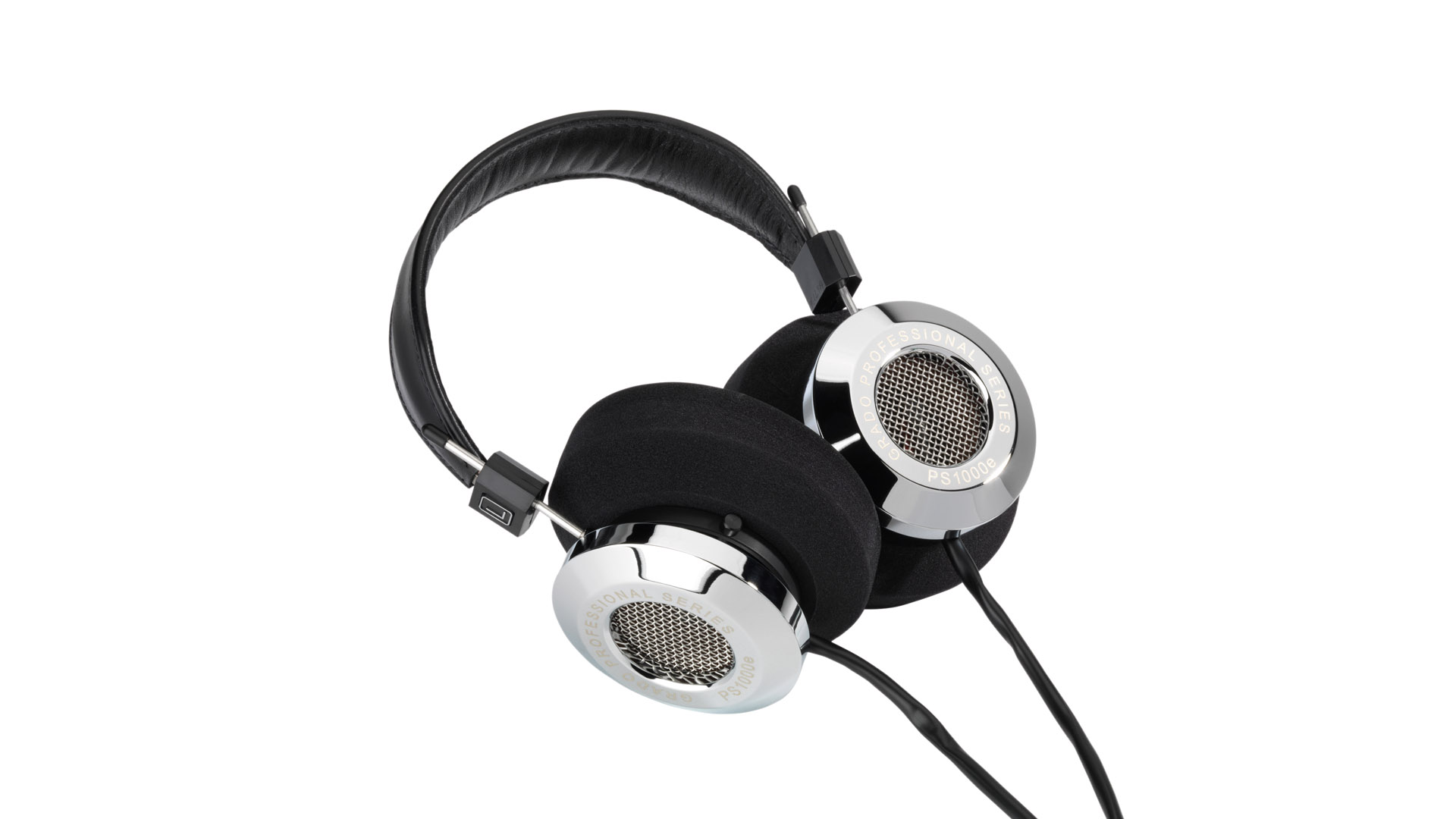
Transducer type Dynamic
Operating principle Open air
Frequency response 5 - 50,000Hz
Impedance 32 ohms
Driver matched dB .05 dB
The earpieces on the PS1000es use an inner core made of handcrafted, specially cured mahogany, while the outer housing is made of chrome-plated aluminium. The combination of the two materials results in a well-damped, low resonance platform for the new 50mm drive unit to work from.
Grado’s engineers have worked hard on this driver, refining the voice coil and diaphragm to improve responsiveness and accuracy.
It feels as if every aspect of the design has been considered, from the quality of the cable – a 12 core, high purity long crystal copper conductor – to the oversized foam earpads designed to sit around the ear and maintain a degree of spacing between the drive unit and you.
Comfort
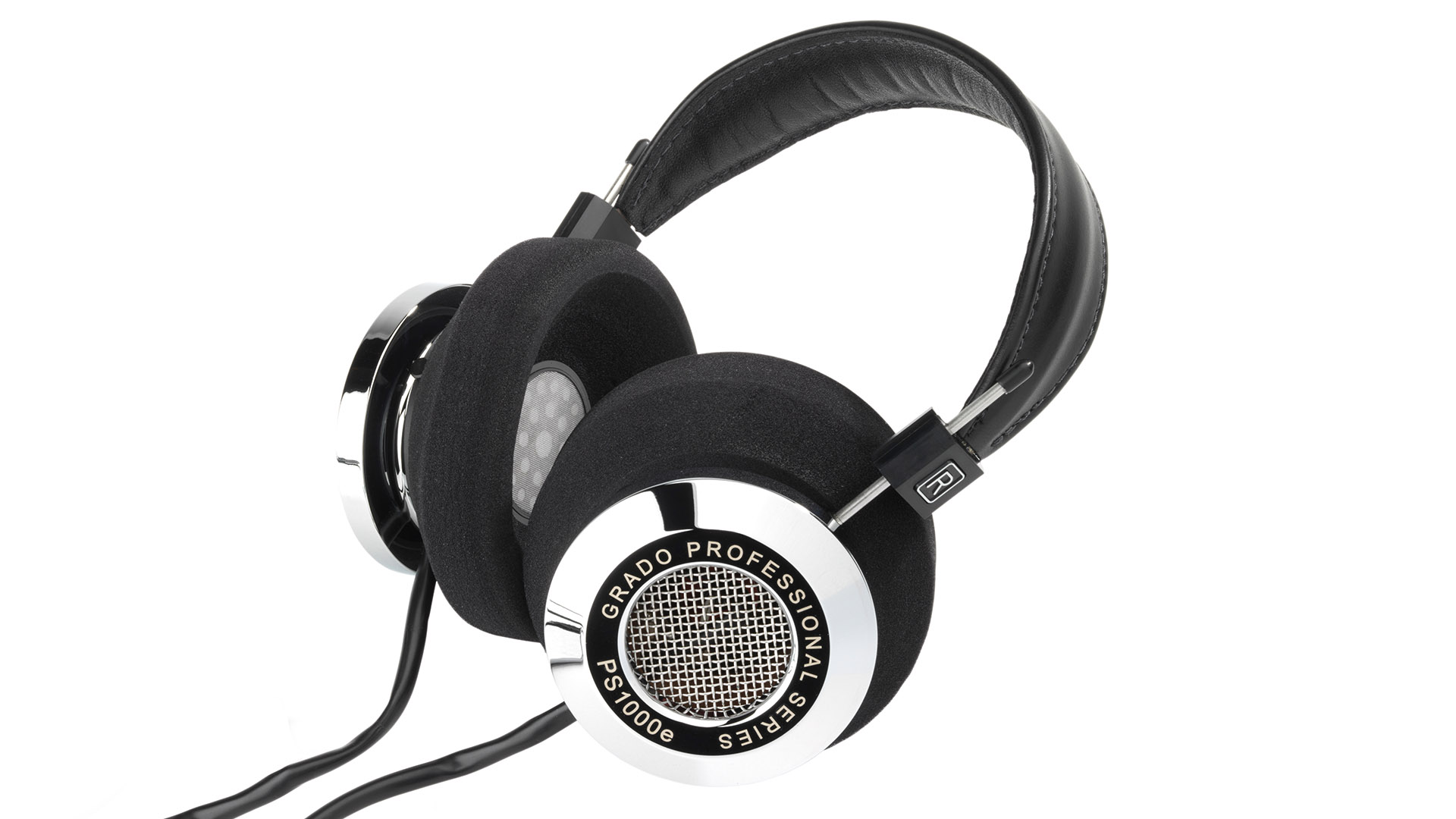
Grado is pretty confident in the fit of these headphones, claiming they are among the most comfortable available, but we’re not so sure. The overall weight is fairly hefty (483g without cables) and concentrated on those hefty earpieces.
Combined with the relatively light inward clamping pressure, the headphones tend to move around with anything less than steady head movements. Those big foam earpads may not suit all heads too. On the plus side, at least the open nature of the design prevents our ears from overheating from extended use and the headband, though minimally padded, is wide and nicely shaped.
The PS1000es don’t exude luxury or quality in the way rivals from the likes of Sennheiser and Beyerdynamic do – that isn’t the Grado way. However, they are sturdy, solid and able to withstand years of use without issue. In our experience the foam cushions on Grado headphones tend to deteriorate and need periodic replacement over a few years, but that’s no big issue as spares are readily available.
Sound
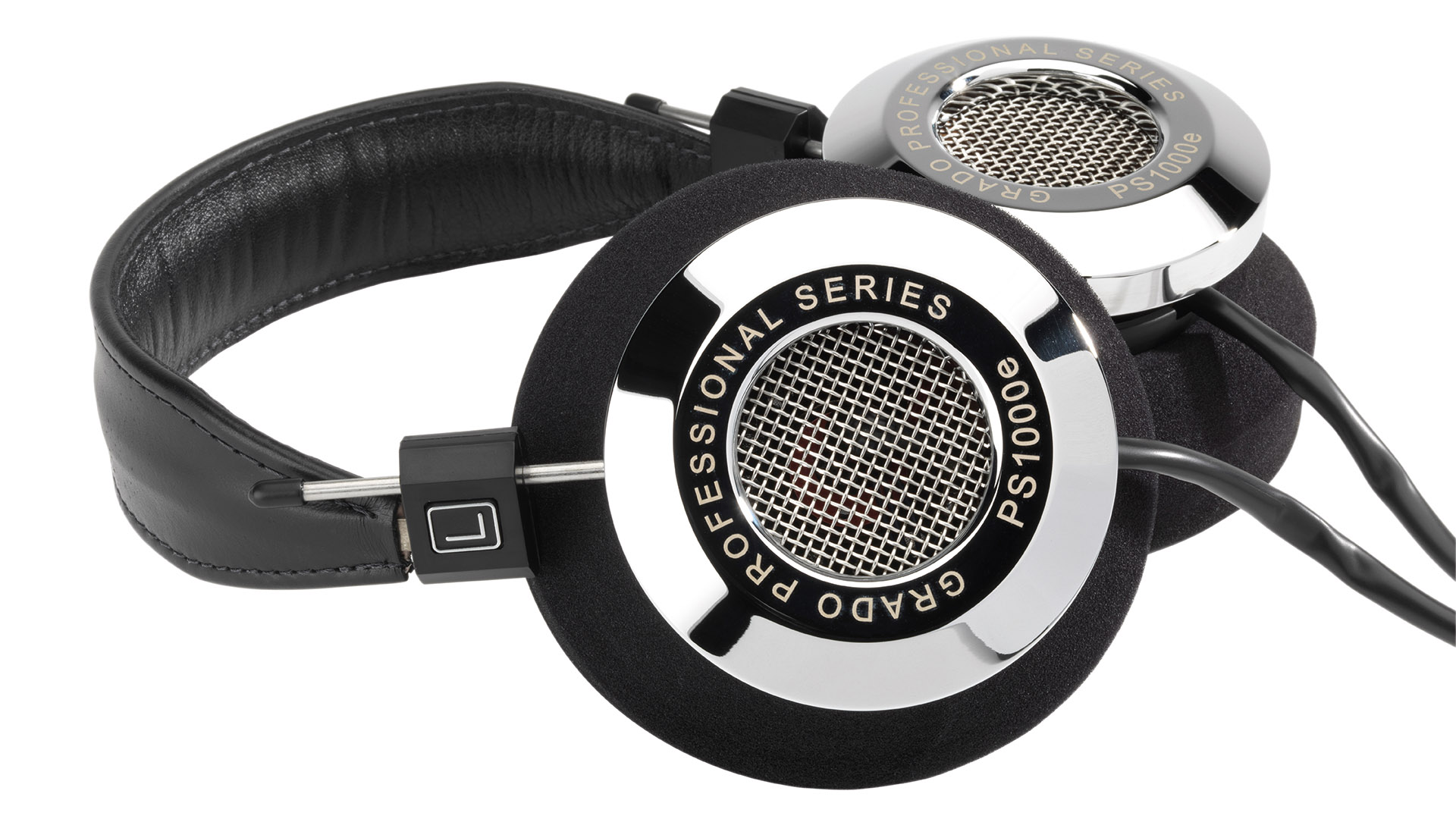
Don’t be tempted to skimp on partnering equipment. While Grado provides a 6.3mm to 3.5mm adaptor to allow the PS1000es to be connected to a smartphone, we wouldn’t recommend it. While you’ll get a decent sound – those headphones are usefully sensitive at just short of 100dB for a milliwatt signal – you really won’t get a sense of just how good these Grados are.
To do that you’ll need a high quality source. Our laptop running Audirvana Plus software and filled with good quality CD spec and hi-res recordings is a fair start, though switch to a dedicated high-end source such as our reference Naim NDS/555PS music streamer and the improvement is obvious.
We use Chord’s excellent Hugo TT2 DAC/headphone amp for most of the test with a standard Hugo 2 pitching in on occasion. These headphones are frighteningly transparent, so any lack of quality in the recording, source or amplification is easily heard.
If that gives the impression that these Grados aren’t particularly forgiving, you’d be right. They can easily sound harsh and aggressive if provoked by shortcomings further up the chain, and it’s a good idea to partner them with refined electronics. Once you do this, and listen to well-produced recordings, the PS1000es start to shine.
They’re impressively dramatic, revealing both low and high level changes in intensity with ease. Play Stravinsky’s The Rite Of Spring and these headphones come to life, delivering the recording’s wide-ranging dynamics and often ferocious sense of attack brilliantly. There’s just so much detail and it’s all organised with composure and stability.
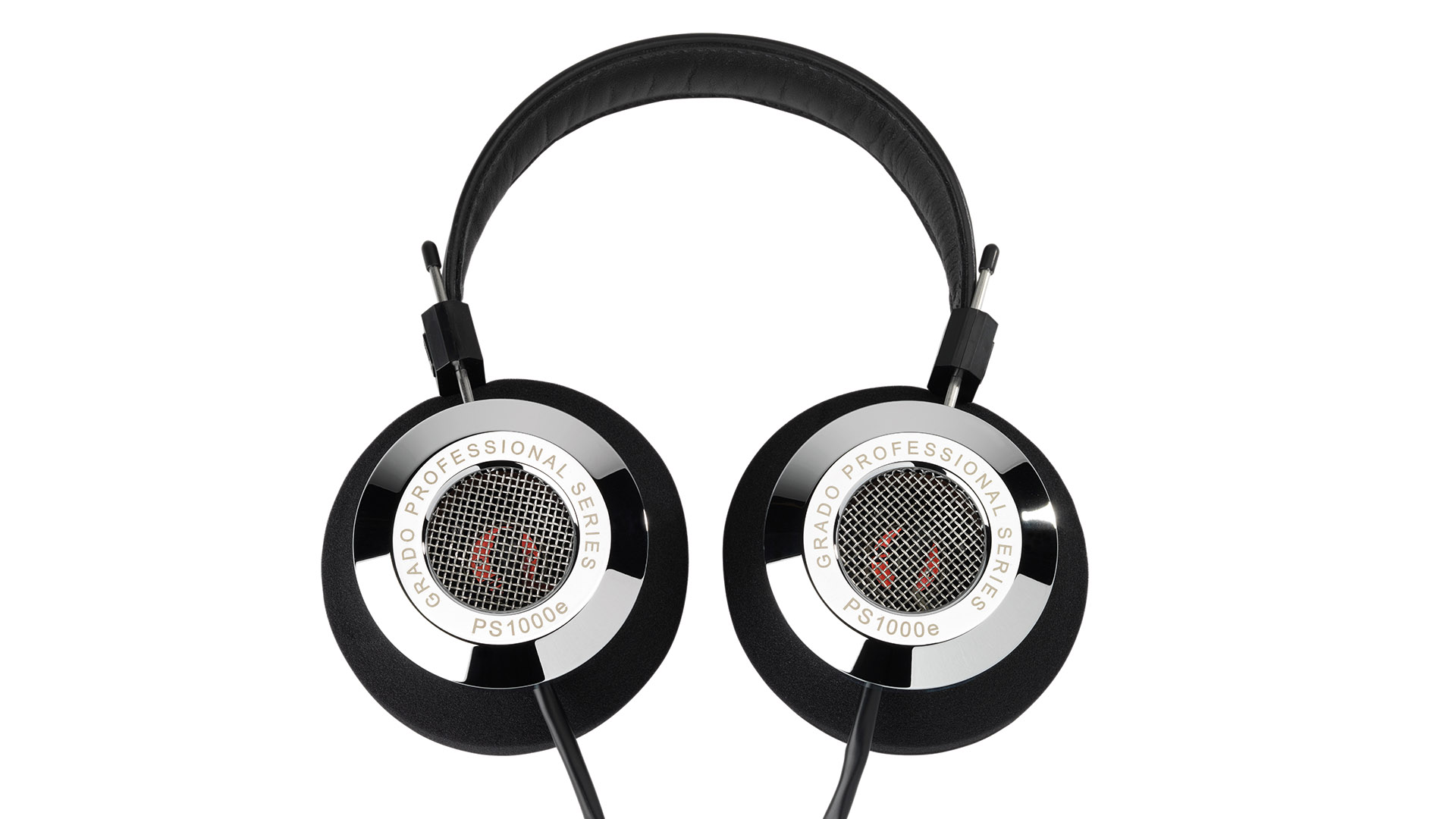
We’re also taken with the sheer responsiveness of these Grados; rarely do we come across headphones that sound so fast and agile, ready to respond to the slightest change in input with such determination.
Tonally they’re a little forward in the midrange and upper frequencies, and lack a little in terms of outright refinement in these areas when compared to the best of their rivals. This is part of the reason they’re so fussy about the quality of signal, but it also gives them an exciting and upfront balance that makes them so entertaining.
That feeling is reinforced when we play Neneh Cherry’s Broken Politics. The Grados render the spaciously layered electronic production superbly and deliver the album’s complex rhythm patterns with the confidence of Einstein explaining his theory of general relativity.
We’re impressed by the excellent detail resolution, the way the Grados render instrumental textures and how they keep a firm grip on multiple instrumental strands without losing track of the music as a whole. Cherry’s voice comes through with subtlety and passion, and just enough in the way of natural warmth and body to convince. Add wonderfully articulate bass that makes up for what it lacks in outright authority in grip and definition, and you have a pair of headphones to savour.
Verdict
The PS1000es aren’t perfect, but in their areas of strengths they are mighty difficult to better. If you place excitement above refinement and entertainment over analysis, they’re a superb buy.
SCORES
- Sound 4
- Comfort 4
- Build 4
MORE:
See all our Grado reviews
What Hi-Fi?, founded in 1976, is the world's leading independent guide to buying and owning hi-fi and home entertainment products. Our comprehensive tests help you buy the very best for your money, with our advice sections giving you step-by-step information on how to get even more from your music and movies. Everything is tested by our dedicated team of in-house reviewers in our custom-built test rooms in London, Reading and Bath. Our coveted five-star rating and Awards are recognised all over the world as the ultimate seal of approval, so you can buy with absolute confidence.

